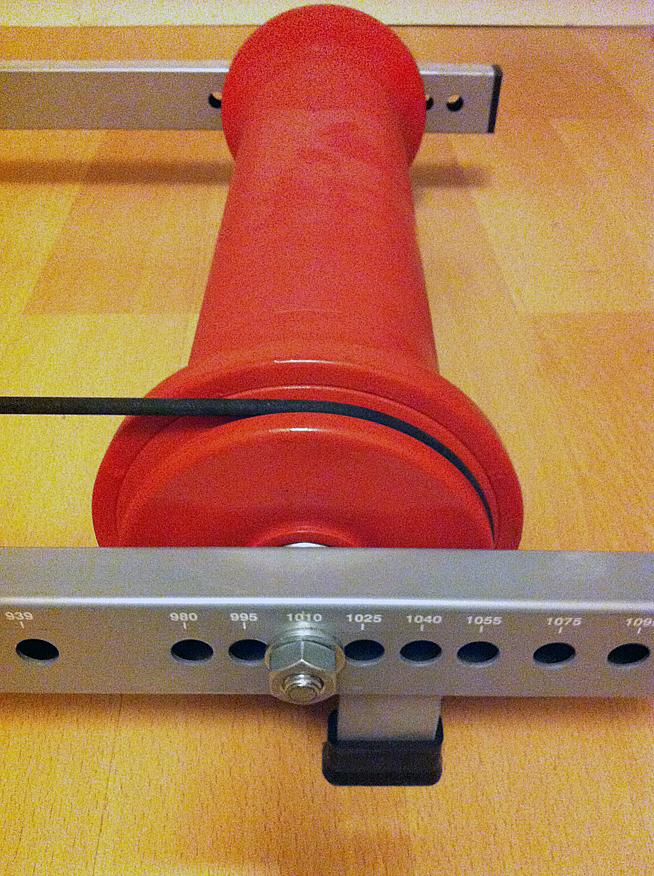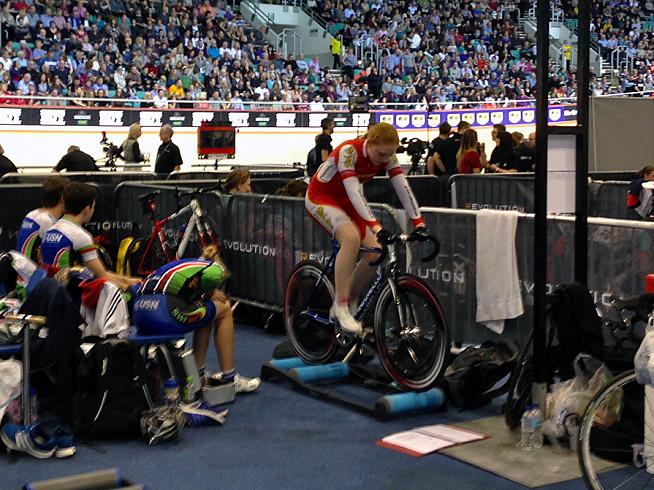As with most aspects of cycling, there is a healthy debate surrounding the pros and cons of training with rollers as opposed to a turbo trainer, or even out on the road regardless of weather conditions. Suffice to say each method has its merits, and people will choose whichever trainer best suits their requirements. While a turbo trainer offers a wider range of training scenarios, such as simulating climbing by increasing resistance, rollers are often seen as the choice of the purist who would prefer to be training on the open road. This article sets out some basic pointers for cyclists new to rollers.
Rollers are widely recognised as an effective way of improving your balance and increasing the efficiency of your pedalling stroke. While this may sound patronising - we all know how to ride a bike, after all - developing these key skills can improve every aspect of your riding. One advantage of rollers is that you are required to remain far more alert when using them, as a lapse in concentration can lead to a tumble. On rollers you are actively engaged in maintaining your balance so switching off and allowing your mind to wander is not an option.
It is commonly suggested that new roller riders use a table or chair back to support yourself during the first trial rides, which is good advice; I'd also add that you should be in a safe place away from anything you could fall on. Avoid the temptation to set up the rollers in a doorway. This may provide support as you start, but could also cause serious injury should you fall to one side at speed. You should wear regular shoes too, don't even think about clipless pedals or toe clips just yet. If you lose your balance or wobble, you can simply brake and step off the bike.

Keeping your stronger hand on the bars, support yourself with your prop to begin and use a low gear to keep your cadence high; this is essential on a set of rollers. If you stop pedalling the natural drag will slow you down within seconds, and unlike a turbo trainer you cannot freewheel for too long on rollers. It's important to check your tyre pressure before using rollers too; if your tyres are not pumped up they will cause unnecessary drag and wear quicker.
During your first few sessions you should find your balance improving and you may wish to start moving your hands around on the bars. As you start to feel more comfortable, alternate between the hoods and the drops. This will boost your confidence and allow you to start planning suitable training sessions as these are the positions you will adopt for sprint and recovery intervals. You can also try shifting gears, but keep any shifting under control so as to not upset your cadence which should remain between 80 to 90 rpm.
Rollers can be used for a variety of training sessions from long tempo rides to short HIIT (high-intensity interval training) sessions. As previously mentioned, although possible, it is difficult to use rollers and stand on the pedals of your bike to simulate climbing. You will need to keep your weight low and to the rear if you stand on the pedals, or your momentum and the desire to lean forwards will most likely push the front wheel off the drum with obvious consequences. I prefer to stay seated and alternate between short durations at a higher speed and longer periods of recovery. Novice riders will find that parabolic rollers such as the Elite Ghibli help accommodate any concentration lapses, and it won't be long before you start to think about using toe clips or clipless pedals.
Feeling the benefits
You should begin to identify the fruits of your labours quite soon. After ten sessions of gradual increases in tempo and duration building up my confidence, I was riding in clipless pedals for the length of the session and only reliant on a prop at the start and the end of the session. By improving your balance you will be more comfortable riding in close proximity to other people, which will benefit racers and sportive riders alike. You should also be able to corner at speed with greater confidence, and riders who have good balance can engage their core muscles while climbing seated, saving vital watts on those long ascents.
Rollers will also develop an efficient pedalling stroke as you apply power throughout the pedal cycle. As your pedal stroke is essential to remaining upright and steady, using rollers will improve your stroke without much effort on your part.

I won't lie, however: compared with cycling on the road, using rollers can be boring. One solution is to set up a laptop nearby to play DVDs, or even put the rollers in front of the television if your partner is accommodating to your cycling training. Riding on rollers is the one time it's definitely acceptable to listen to music on earphones while cycling. Make yourself a playlist of motivational music to boost your performance - anything from a Rocky soundtrack should do the trick.
Parabolic rollers are available from the usual suspects from around £150, although it's worth looking for a second-hand set as quite often people don't give themselves enough time to develop their balance and sell them soon after purchase. If you've already splashed out on a wheel upgrade and lighter components, it's time to look a little close to home for your next performance upgrade. Give rollers a spin and you'll not only shave a few grams off your bike's "engine", you'll improve as a cyclist as well!
0 Comments





